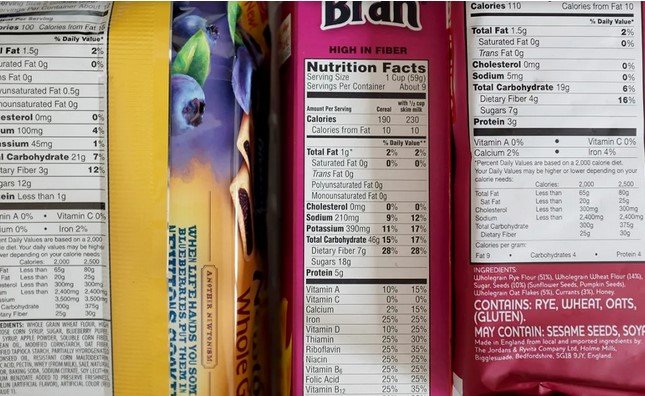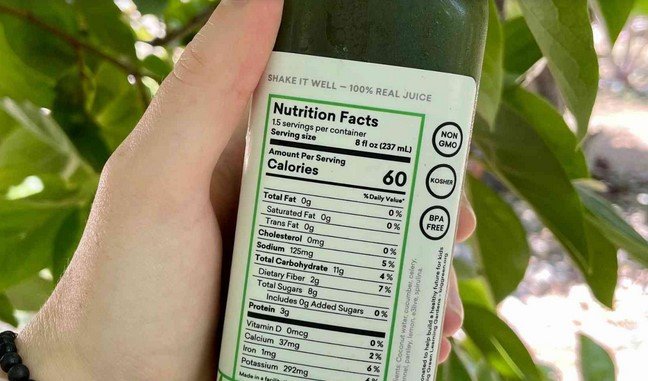How to Read Nutrition Labels Effectively
Reading nutrition labels effectively is a valuable skill that helps you make informed decisions about what you eat. Whether you’re trying to lose weight, maintain a healthy lifestyle, or simply make healthier choices, understanding nutrition labels is essential. In this guide, we will walk you through the key components of nutrition labels and how to interpret them to better manage your diet.

1. Understand the Serving Size
The first thing you should check on any nutrition label is the serving size. Serving sizes are often misleading, so it’s important to pay attention to them. Serving sizes can vary depending on the product. For example, a serving of cereal may be listed as one cup, but many people pour much more than that into their bowls. The serving size determines how many calories and nutrients are in each portion.
By knowing the serving size, you can more accurately calculate how many calories, fats, and other nutrients you’re consuming. If you’re eating more than the listed serving size, simply multiply the numbers by the number of servings you’ve eaten. This helps prevent overconsumption of unhealthy ingredients.
2. Check the Calories Per Serving
Once you know the serving size, the next important detail is the calories per serving. This tells you how much energy you will get from each serving of the product. If you’re trying to manage your weight, keep track of your daily calorie intake to make sure you’re not exceeding your energy needs.
Calories are important, but they’re just one part of the equation. It’s crucial to pay attention to the quality of those calories. For example, a snack that provides 150 calories from natural ingredients, like almonds or fruit, is more beneficial than 150 calories from refined sugars or processed snacks.
3. Look at the Nutritional Content
The next section to focus on is the nutritional content of the product. This includes the amount of fat, protein, carbohydrates, and fiber, among other nutrients. Start with the total fat content, paying special attention to saturated fat and trans fat. These unhealthy fats should be consumed in moderation, as they can increase the risk of heart disease.
Next, check the carbohydrates and fibre. Fibre is a key nutrient that aids digestion and helps maintain healthy blood sugar levels. Ideally, you want to choose foods that are high in fibre, as they help with satiety and overall health. Also, take note of added sugars. The American Heart Association recommends limiting added sugars in your diet, as they can contribute to weight gain and other health issues.
4. Monitor the Vitamins and Minerals
Nutrition labels also provide information about the vitamins and minerals in the product. Vitamins such as vitamin A, C, D, and minerals like calcium and iron are important for overall health. The percentage daily values (%DV) show how much of each nutrient you’re getting from a serving based on a 2,000-calorie diet. If a product has 20% or more of the daily recommended value for a nutrient, it’s considered a good source.
While most people are concerned about getting enough nutrients like calcium and iron, be mindful of vitamins and minerals that are often lacking in typical diets, such as potassium and vitamin D. Look for foods that are rich in these nutrients to support your overall health.
5. Pay Attention to Ingredient List
Finally, examine the ingredient list. Ingredients are listed in descending order by weight, meaning the first few ingredients are the most prominent. The fewer ingredients a product has, the better. Look for whole, natural ingredients and avoid foods that contain artificial additives, preservatives, or excessive amounts of added sugars and unhealthy fats.
If you see long, complicated words or chemicals that you don’t recognize, it might be a red flag. A simple rule of thumb: the fewer ingredients, the better. Whole foods like fruits, vegetables, grains, and nuts often have shorter ingredient lists and provide more nutrients.
Conclusion
Reading nutrition labels effectively is key to making healthier food choices. By paying attention to serving sizes, calorie counts, nutritional content, vitamins, minerals, and ingredient lists, you can better manage your diet and health. Start by using these tips next time you shop, and you’ll feel more confident about the foods you’re choosing. Making informed decisions about what you eat will help you lead a healthier, more balanced lifestyle.



